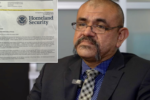A decades-long Social Security fraud scheme involving a deceased mother and her daughter has come to light. Authorities have accused a woman of collecting over $360,000 in Social Security payments intended for her late mother, who passed away in 1999. This shocking case highlights vulnerabilities in the system and serves as a cautionary tale for monitoring public funds.
How the Fraud Allegedly Unfolded
According to federal investigators, the woman continued to withdraw her deceased mother’s Social Security benefits for more than two decades. The scheme reportedly began immediately after her mother’s death and lasted until its discovery in 2023. Over the years, the accumulated amount reached approximately $360,000.
Officials revealed that the accused had failed to report her mother’s death to the Social Security Administration (SSA). Instead, she allegedly kept the account active and used the funds for personal expenses.
The crime was uncovered during a routine audit by the SSA, which flagged irregularities in the benefit payments. Investigators traced the account activity and connected the withdrawals to the accused.
Consequences of Social Security Fraud
Social Security fraud is a serious crime with significant legal consequences. If convicted, the accused could face:
- Repayment of the stolen funds, including penalties and interest.
- Criminal charges, such as wire fraud and theft of government property.
- Imprisonment, depending on the severity of the case.
In addition to legal penalties, such frauds undermine the trust in government programs designed to support vulnerable populations.
How the SSA Detects Fraud
The SSA employs various methods to detect and prevent fraud, including:
- Regular audits to identify anomalies in benefit payments.
- Cross-referencing death records with Social Security accounts.
- Encouraging public reporting of suspicious activities.
In this case, the SSA’s audit process was crucial in uncovering the fraudulent activity.
Preventing Future Fraud
To prevent similar incidents, the SSA and beneficiaries must take proactive steps:
- Timely Death Notifications: Family members are legally required to report the death of a Social Security recipient immediately.
- Enhanced Data Sharing: Collaboration between government agencies can help identify and close accounts of deceased individuals more quickly.
- Public Awareness: Educating citizens about their responsibilities regarding Social Security can deter potential fraud.
The Broader Impact
This case is not isolated. The SSA loses millions of dollars annually due to fraudulent claims and improper payments. Addressing these issues is essential to preserve the program’s integrity and ensure funds reach those who genuinely need them.
For more information on Social Security fraud and how to report it, visit the Social Security Administration’s fraud prevention page.
Conclusion
The alleged theft of $360,000 in Social Security payments by a woman over two decades underscores the importance of vigilance in government programs. While the case will likely result in severe consequences for the accused, it also highlights areas where the system can improve to prevent such incidents in the future.
As the legal process unfolds, this case serves as a reminder of the critical role accountability plays in safeguarding public resources.
Disclaimer – Our team has carefully fact-checked this article to make sure it’s accurate and free from any misinformation. We’re dedicated to keeping our content honest and reliable for our readers.








